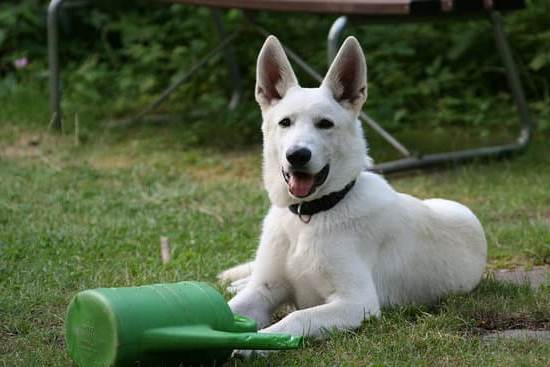Training a dog to walk off-leash is a goal that many dog owners aspire to achieve. The freedom and control offered by off-leash walking can enhance the overall experience of dog ownership and provide mental and physical stimulation for our furry friends.
However, it begs the question: Is it hard to train a dog to walk off-leash? In this article, we will delve into the concept of off-leash walking, its significance in dog training, and highlight the benefits as well as potential challenges faced when attempting to train a dog to walk off-leash.
Off-leash walking refers to allowing a dog to roam free without being confined by a leash. This level of freedom allows dogs to explore their surroundings, socialize with other canines, and engage in natural behaviors like sniffing, running, and playing. Moreover, off-leash walking provides an avenue for owners to strengthen their bond with their dogs through trust and communication.
While the idea of off-leash walking may sound enticing, there are various factors to consider before embarking on this training journey. Before attempting off-leash walking, it is crucial to lay down a foundation of basic obedience training for your dog.
Teaching fundamental commands such as sit, stay, come, and leave it will establish control and ensure your dog’s safety in any situation. Basic obedience training plays an integral role in building the necessary skills and behaviors required for successful off-leash walking.
The Importance of Basic Obedience Training
Basic obedience training is the foundation for successfully training a dog to walk off-leash. Before attempting off-leash walking, it is crucial to ensure that your dog has mastered basic obedience commands such as “sit,” “stay,” “come,” and “heel.” These commands not only establish your role as the leader in your relationship with your dog but also provide the necessary control and foundation for off-leash control.
The relationship between basic obedience commands and off-leash control is closely intertwined. The ability to have reliable, immediate responses from your dog when given a command is essential when they are off-leash. It ensures that they will listen and obey even when there are distractions or temptations present. Without this foundation, attempting off-leash walks can be challenging and potentially unsafe.
To achieve basic obedience, consistent training sessions paired with positive reinforcement techniques are key. Using treats, verbal praise, and affectionate gestures can encourage your dog’s compliance with each command. It is important to be patient and persistent during the training process, as it may take time for your dog to fully understand and respond consistently.
To effectively establish basic obedience
- Start with one command at a time: Begin by focusing on one command until your dog fully understands how to respond to it before moving on to another command.
- Be consistent: Use the same gestures, vocal tones, and cues each time you give a command so that your dog can easily associate them with their desired action.
- Keep sessions short and frequent: Dogs learn best through repeated shorter sessions rather than one long training session.
- Gradually increase difficulty: Once your dog has mastered a command in an environment with minimal distractions, gradually introduce more challenging settings (e.g., busier streets or parks) so they can learn to obey despite increased distractions.
By investing time in basic obedience training, you lay the groundwork necessary for successful off-leash walking. This level of training ensures that your dog will have a solid understanding of the commands and be more inclined to respond promptly, enhancing their safety and enjoyment during off-leash adventures.
Assessing Your Dog’s Readiness for Off-Leash Walking
Before embarking on the journey of training your dog to walk off-leash, it is crucial to assess their readiness for this level of freedom and responsibility. While off-leash walking can provide numerous benefits for both you and your furry companion, it is not suitable for every dog. Assessing your dog’s behavior, temperament, and responsiveness will help determine if they are ready to handle the challenges that come with walking off-leash.
One key factor to consider is your dog’s obedience skills. It is essential that your dog has a solid foundation in basic obedience commands such as “sit,” “stay,” and most importantly, “come” or recall. These basic commands form the building blocks of off-leash control. If your dog struggles with these commands even when on a leash, it may be wise to work on improving their obedience skills before attempting off-leash walking.
Additionally, evaluating your dog’s behavior and temperament will play a significant role in determining their readiness for off-leash training. Some dogs naturally have a strong desire to stay close and check in with their owners, while others have a more independent streak. Dogs who display an exemplary level of focus, impulse control, and reliability in following cues are generally better candidates for successful off-leash training.
Assessment also involves understanding how responsive your dog is to you both inside and outside training environments. A well-trained dog should demonstrate consistent responsiveness throughout various situations like encountering distractions or being amid stimulating environments. If your dog easily becomes distracted or does not consistently respond to your cues while on a leash, it may indicate that they are not yet ready for off-leash walking.
| Assessment Factors | Dog’s Readiness |
|---|---|
| Obedience Skills | Strong foundation in basic obedience commands |
| Behavior and Temperament | Focused, impulse-controlled, and reliable in following cues |
| Responsiveness in Various Situations | Consistent response to cues, even when faced with distractions |
Building a Strong Recall Command
A reliable recall command is crucial for successful off-leash walking with your dog. The recall command ensures that when called, your dog comes back to you promptly and reliably. This command provides the foundation for maintaining control and keeping your dog safe during off-leash walks.
To build a strong recall command, it is important to start with basic obedience training. This includes teaching your dog essential commands such as “sit,” “stay,” and “come.” By establishing a solid foundation in obedience training, you lay the groundwork for effective off-leash control.
One effective technique for teaching and reinforcing recall is positive reinforcement. Using rewards such as treats or praise can motivate your dog to come back when called. Start by practicing in a distraction-free environment and gradually increase the level of difficulty by adding distractions or distance.
It is also important to never punish or scold your dog when they do come back to you after being called, even if it took them longer than expected. By remaining patient and positive, you create a safe and trusting environment that encourages your dog to respond to the recall command consistently.
| Key Points | Details |
|---|---|
| Obedience Training | Teach essential commands before working on recall |
| Positive Reinforcement | Reward your dog for coming back when called |
| Practice Environment | Start in distraction-free areas and gradually increase difficulty |
| No Punishment | Avoid scolding or punishing your dog for delayed responses |
By investing time and effort into building a strong recall command, you set the stage for successful off-leash walking. It is important to remember that this process takes patience and consistency. With practice, your dog will learn to associate the recall command with positive experiences, leading to improved response and reliable off-leash control.
Gradual Progression
One of the key aspects in successfully training a dog to walk off-leash is to follow a gradual progression from on-leash training to off-leash freedom. This step-by-step approach allows both the dog and the owner to build confidence and trust while ensuring safety and control. By using the technique of transitioning from leash to long line to off-leash, you can effectively train your dog to walk without restraint.
1. Leash Training:strong> Before attempting off-leash walking, it is crucial to establish a solid foundation of leash training. Teach your dog basic obedience commands such as “sit,” “stay,” and “heel” while keeping them on a leash. Practice these commands consistently until your dog understands and obeys them reliably.
2. Introducing Long Lines: Once your dog is comfortable with on-leash walking and responds well to basic obedience commands, you can gradually introduce a long line for added freedom while maintaining control.
A long line is typically 20-30 feet in length and allows your dog more room to explore while still being connected to you. Begin by attaching the long line to your dog’s harness or collar, allowing them some extra distance but still providing guidance through gentle tugs when necessary.
3. Off-Leash Training: Once your dog demonstrates consistent obedience and responsiveness on the long line, you can begin off-leash training in controlled environments such as fenced-in areas or low-distraction parks. Start by practicing recall exercises with your dog, reinforcing their understanding of coming back when called. Gradually increase the distance between you and your dog, always offering praise, treats, or play as rewards for returning promptly.
It is essential always to prioritize safety during off-leash training by choosing appropriate locations free from potential hazards or dangers for your dog. Additionally, ensure that you are complying with any local leash laws or regulations before practicing off-leash walking in public spaces.
By following this gradual progression from leash to long line to off-leash training, you can build a solid foundation of trust, obedience, and control for your dog. Remember to be patient, consistent, and positive throughout the process as you guide your canine companion towards off-leash success.
Training Tools and Techniques for Off-Leash Success
Off-leash training requires the use of various tools and techniques to ensure success and maintain control over the dog. These tools can assist in reinforcing commands, increasing responsiveness, and providing a means of communication between the owner and the dog.
Additionally, incorporating positive reinforcement techniques is crucial for creating a strong bond with the dog and encouraging desired behavior. By understanding the different training tools available and implementing effective techniques, owners can increase their chances of achieving off-leash success.
Training Tools
There are several training tools that can greatly assist in off-leash training. One essential tool is a long line, which allows for control over the dog while still granting them freedom to roam within a certain distance. A long line should be lightweight yet durable, typically ranging from 15 to 30 feet in length. It’s important to attach the long line to a well-fitted harness rather than a collar to prevent choking or injury.
Another useful tool is a clicker, which can serve as an effective marker for desired behavior during training sessions. The clicker makes a distinct sound each time it is pressed, signaling to the dog that they have performed correctly. This immediate feedback helps reinforce positive behavior and aids in communication between owner and dog.
Treats also play an integral role in off-leash training. They serve as powerful motivators for dogs and can be used as rewards for following commands or exhibiting good behavior. Treats should be small, bite-sized pieces that are easily consumed by the dog without causing distraction or slowing down their movement.
Positive Reinforcement Techniques
Positive reinforcement is a highly effective technique for off-leash training. It involves rewarding desirable behaviors with praise, treats, or playtime to encourage repetition of those behaviors. This technique promotes focus on pleasing the owner rather than avoiding punishment.
One common positive reinforcement method is known as “luring.” This technique involves using a treat to guide the dog into performing a desired behavior, such as sitting or coming when called. Once the dog successfully performs the behavior, they are rewarded with the treat and praise. Over time, the reliance on treats can be gradually reduced as the dog becomes more responsive to verbal cues and commands.
It is important for owners to be consistent in their use of positive reinforcement techniques, as inconsistency can lead to confusion for the dog. By consistently rewarding desired behaviors and providing clear cues, owners can establish trust and effective communication with their dogs while working towards successful off-leash walking.
Using a combination of training tools and techniques can contribute to achieving off-leash success with a dog. The tools outlined above, including long lines, clickers, and treats, provide valuable support during training sessions by maintaining control and reinforcing positive behavior. Moreover, integrating positive reinforcement techniques ensures that the training process remains enjoyable for both owner and dog while strengthening their bond.
Troubleshooting Common Challenges
Addressing Distractions during Off-Leash Training
One common challenge that dog owners may encounter when training their dogs to walk off-leash is dealing with distractions. Dogs are naturally curious creatures, and they can easily become distracted by various sights, sounds, and smells in their environment. These distractions can often cause dogs to lose focus and stray away from their owners, potentially putting them at risk.
To overcome this challenge, it is important to gradually introduce distractions into the training sessions. Start with low-level distractions, such as a familiar person walking by or a quiet park setting. As your dog becomes more proficient at ignoring these distractions and staying focused on you, gradually increase the level of difficulty. This may include training in busier areas with more people and other dogs or exposing your dog to different types of environments.
Additionally, teaching a solid “leave it” command can be incredibly helpful in managing distractions during off-leash walks. By teaching your dog to leave any tempting objects or scents alone upon hearing this command, you can redirect their attention back to you and maintain control.
Dealing with Fear and Anxiety
Another common challenge when training a dog to walk off-leash is dealing with fear and anxiety. Some dogs may feel uncomfortable or scared when not on a leash, especially if they have had previous negative experiences or lack socialization.
If your dog exhibits fear or anxiety during off-leash training, it is crucial to be patient and empathetic. Pushing your dog too quickly or forcing them into uncomfortable situations can exacerbate their fears and potentially lead to regression in their training progress.
Start by slowly exposing your dog to off-leash situations in a controlled and safe environment. Use positive reinforcement techniques such as treats, praise, and playtime to create positive associations with being off-leash. Gradually increase the duration of off-leash walks as your dog becomes more comfortable and confident.
If your dog’s fear or anxiety persists, it may be helpful to consult with a professional dog trainer or behaviorist. They can provide additional guidance and support tailored to your dog’s specific needs.
Maintaining Consistent Control
Maintaining consistent control over your dog off-leash is essential for their safety and the success of their training. However, this can be challenging, especially in unpredictable environments or when encountering unexpected situations.
A reliable recall command is crucial for maintaining control during off-leash walks. Consistently practicing and reinforcing recall exercises will help solidify your dog’s response to this command. Additionally, utilizing long lines during the early stages of off-leash training can provide an extra level of security and control while allowing your dog some freedom.
Consistency in your actions and expectations is also vital. Set clear boundaries for your dog during off-leash walks and consistently reinforce these boundaries. Stay alert and attentive to any potential hazards or unusual behaviors from your dog to ensure their safety.
By troubleshooting common challenges such as distractions, fear, and maintaining consistent control, you can enhance the effectiveness of off-leash training sessions with your dog. Remember that each dog is unique, so it may take time and patience to find the right strategies that work best for your furry companion. With dedication and perseverance, you can overcome these challenges and enjoy successful off-leash walks with your well-trained canine friend.
Strengthening Bond and Trust through Off-Leash Walking
Off-leash walking not only provides dogs with physical exercise and mental stimulation but also offers a unique opportunity to strengthen the bond and trust between a dog and their owner. When a dog is allowed the freedom to explore and interact with their environment while off-leash, it fosters a sense of companionship and reliance on the owner.
This section will explore how off-leash walking can deepen the bond between a dog and their owner by highlighting the role of trust and communication in successful off-leash training.
One of the key components of off-leash walking is establishing trust between the dog and their owner. A dog must have confidence in their owner’s ability to keep them safe, even without physical restraint. Through consistent training, positive reinforcement, and effective communication, an owner can build this trust with their furry companion. By allowing a dog to walk off-leash, it shows that the owner trusts and believes in their abilities, enhancing the bond between them.
Off-leash walking also promotes effective communication between a dog and their owner. In order for an off-leash walk to be successful, both parties need to be able to understand each other’s signals and cues. This includes verbal commands, body language, hand signals, or any previously established communication methods used during obedience training. As an owner guides their dog through different environments while off-leash, they develop a deeper understanding of each other’s needs and preferences.
Furthermore, off-leash walking provides an opportunity for both fun and learning experiences for dogs and owners alike. It allows dogs to explore new areas at their own pace while still maintaining control under their owner’s guidance. For owners, watching their beloved pet happily roam free while remaining responsive to commands can evoke feelings of joy and accomplishment. This shared experience helps create lasting memories as well as strengthening the emotional connection between them.
Conclusion
In conclusion, training a dog to walk off-leash may seem challenging, but with the right techniques and dedication, it can be a rewarding experience for both the owner and the dog. Throughout this article, we have discussed the importance of basic obedience training as a foundation for off-leash control. We have also explored key factors to consider when assessing a dog’s readiness for off-leash walking, as well as effective techniques for building a strong recall command.
Transitioning from on-leash training to off-leash freedom requires a gradual progression, starting with long lines to maintain control in the early stages. Training tools such as long lines, clickers, and treats can aid in this process. Positive reinforcement techniques have proven to be highly effective in off-leash training.
Although there may be common challenges encountered during off-leash training, such as distractions and fear, these can be overcome with patience and consistent control. Off-leash walking not only strengthens the bond between a dog and their owner but also enhances trust and communication. By embracing the challenge of training their dog to walk off-leash, owners open up a world of rewards and possibilities for themselves and their furry companions.
Overall, investing time and effort in training your dog to walk off-leash is an investment in fostering an unbreakable bond. The rewards go beyond just having more freedom during walks; they extend to enhancing mutual understanding and trust between you and your canine companion. So don’t hesitate to embark on this journey – embrace the challenge and reap the numerous benefits that come with achieving off-leash success with your beloved pet.
Frequently Asked Questions
How do I teach my dog to be off the leash?
Teaching a dog to be off the leash requires consistent training and building a strong foundation of obedience commands. Start by teaching your dog basic commands like “sit,” “stay,” and “come” while on the leash. Once your dog shows proficiency in these commands, gradually introduce off-leash training in a controlled environment, such as a securely fenced yard or enclosed area.
Begin by keeping the leash attached but dragging it behind your dog, so you have control if needed. Gradually increase the distance between you and your dog, always providing positive reinforcement for following commands and returning when called. It’s crucial to ensure your dog’s safety and obey local leash laws before allowing off-leash freedom in public areas.
What age do you start off leash training?
Off-leash training should typically start when your dog has developed solid obedience skills on the leash and shows good responsiveness to commands. The appropriate age depends on the individual dog’s maturity level, breed characteristics, and previous training experiences.
Generally, most trainers recommend starting off-leash training around six months to one year old when dogs have better impulse control and are emotionally more stable. However, it’s essential to assess your dog’s readiness individually based on their behavior, focus, ability to follow commands consistently, and reliability in various environments.
Do dogs enjoy being off leash?
Whether or not dogs enjoy being off-leash depends on the individual dog’s personality, breed traits, and personal preferences. Many dogs do experience a sense of freedom and enjoyment when off-leash as it allows them to explore their surroundings at their own pace while engaging in natural behaviors like running freely or chasing scents. Being off-leash can provide mental stimulation and physical exercise opportunities that may not be possible while constantly tethered to a leash.
However, it’s important to note that not all dogs are suitable for off-leash activities due to temperament, lack of proper training or potential hazards in the environment such as busy roads or wildlife encounters. It is crucial for owners to assess their dog’s temperament, training, and the specific situation before allowing them off-leash.

Welcome to the blog! I am a professional dog trainer and have been working with dogs for many years. In this blog, I will be discussing various topics related to dog training, including tips, tricks, and advice. I hope you find this information helpful and informative. Thanks for reading!





